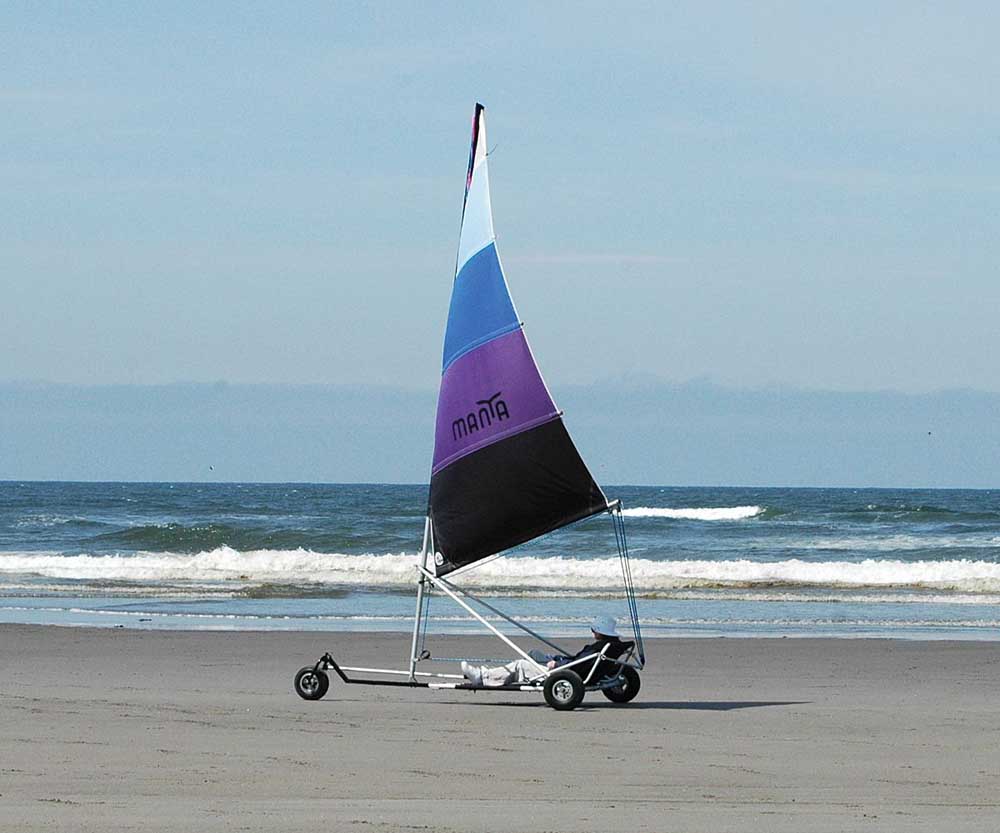Rule change will ease sailing on the beach
Published 11:36 am Monday, January 5, 2015

- Operators of wind-powered vehicles like this will have clearer legal standing to run them on Washington beaches if a rule change goes through.
PENINSULA — Kite buggies, blo-karts, kite boards: these wind-powered vehicles, or land sailers, could be coming to state park lands in Pacific and Grays Harbor counties.
The Washington State Parks and Recreation Commission is considering changing a rule that currently prohibits the use of these vehicles on beaches the agency manages. Now, the commission is looking at allowing them but likely only under certain conditions, including seasonal and area-by-area based restrictions.
Two public meetings to gather public input are scheduled for the end of the month. The first meeting will take place in Ilwaco from 6 p.m. to 8 p.m. Jan. 28 at the Ilwaco Community Building, 158 1st Ave. North. The second will be held in Ocean Shores Jan. 29, 6 p.m. to 8 p.m., at the Ocean Shores Convention Center, 120 West Chance A la Mer.
The proposal comes after wind vehicle enthusiasts approached the commission and requested a rule change in 2008. A rule-making moratorium postponed any considerations at that time, though. Then, in 2010 and 2013, the agency conducted pilot programs on the beaches near Long Beach and at Grays Harbor County’s North and South beaches.
People who wanted to take out their wind-powered vehicles had to get a permit from park offices before hitting the sand, said Cape Disappointment Park Manager Evan Roberts.
“Based on that monitoring we feel comfortable moving forward,” said Randy Kline, park planner with state parks.
Most of the vehicles are designed along the lines of a typical go cart with one very obvious difference: a large sail to catch the wind with and propel the driver down a stretch of road, field or beach. The makers of some models claim their vehicles can harness powerful winds and reach speeds of 55 miles per hour or more.
During the pilot program period, North Beach seemed to be the most popular location, Roberts said, but if the rule is changed he expects to see wind sailers on the Peninsula, too.
“I’ve seen them out there,” said Long Beach Police Chief Flint Wright. “I can’t see it as an issue at all.”
It is an opinion echoed by Roberts and Long Beach City Planner Gayle Borchard.
Borchard believes the wind-powered vehicles could be a good thing for the area’s famously windy beaches.
“It doesn’t seem to me that it would create planning issues [for the city],” she said. “It sounds like exactly what we’d look for on our beaches.”
While Wright and his police officers would likely handle any issues with the vehicles within Long Beach’s city limits, increased use down at the state park and any resulting conflicts or problems could be handled by a variety of agencies including state park rangers, Pacific County sheriff’s deputies and state patrol.
Still, there are a number of things to consider and discuss as the proposal moves forward, Kline said.
The Peninsula is a popular destination during the summer, it’s roads and beaches filling with tourists and locals; wildlife abound in the dunes and woods nearby — the state park and Willapa National Wildlife Refuge close down portions of the beach up north seasonally to protect snowy plover nesting habitat; and the beach is used as, among other things, a highway with cars and trucks driving in at various beach access points up and down the Peninsula.
“Really it’s around public safety,” Kline said. He anticipates that if the rule change does go into effect, so will a number of restrictions to keep everyone and every thing on the beach safe.
“An important consideration is that it’s been legal in Oregon for a long time,” Roberts added.” They don’t seem to have any troubles with it.”
For more information, visit tinyurl.com/lyn2gdq. Comments on the proposed rule change can also be submitted there.




